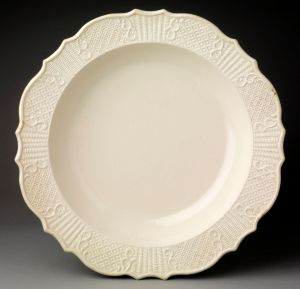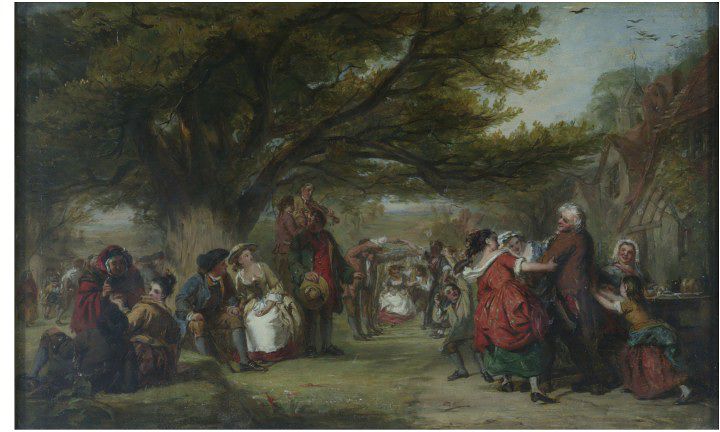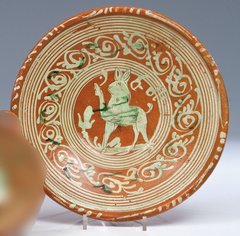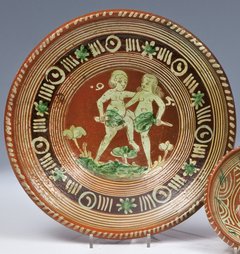Beginning with another of my favourites, Chinese export porcelain. So as not to feel too much of a vandal I tried to keep snipping to a minimum so it was a a jigsaw puzzle task. The first are my larger pieces.
The second much smaller ones.
This stuff was imported to Europe from around 1550 and declined in popularity from the late 18th century when Staffordshire ceramics became de rigueur. A longer post can be found here. The first handle less tea bowls were made of Chinese export porcelain and captured in several eighteenth century family portraits. Did they end up in the Thames?
 |
| An English Family at Tea 1725 (Joseph Van Aken) |
 |
| Still Life With Turkey Pie by Pieter Claesz 1625(Rijksmuseum) |
A popular ceramic for jugs, bowls, chamber pots and salts.
 |
| Mochaware Mustard Pot 1800s (ebay) |
Utilitarian it was primarily used in baking dishes, although I've also included a marble ware piece, probably from a cup.
 |
| Staffordshire Combed Slipware Baking Dish 1790-1800 (John Howard) |
The relief mouldings lift this section of creamware. First produced in 1750 and remaining popular until 1840 it was a cheaper substitute for Chinese export porcelain.
Tucked in the centre are a couple of floret and leaf terminals which may well have decorated the base of jug handles such as the one below.
 |
| Creamware Water Jug 18th Century (John Howard) |
And finally a few shots of what at the moment is the tour de force, remembering virtually none of this is my own design, just a pure copy of someone else's masterpiece.






















































